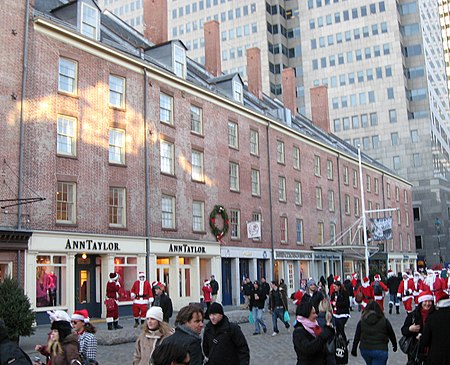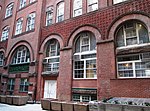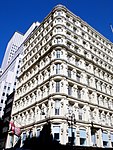Fulton Street (Manhattan)
Financial District, ManhattanNew York City road stubsStreets in Manhattan

Fulton Street is a busy street located in Lower Manhattan in New York City. Located in the Financial District, a few blocks north of Wall Street, it runs from West Street at the site of the World Trade Center to South Street, terminating in front of the South Street Seaport. The westernmost two blocks and the easternmost block are pedestrian streets. The street has a Beaux-Arts architectural feel with many buildings dating back to the Gilded Age or shortly thereafter. The early 19th-century buildings on the south side of the easternmost block are called Schermerhorn Row and are collectively listed on the National Register of Historic Places.
Excerpt from the Wikipedia article Fulton Street (Manhattan) (License: CC BY-SA 3.0, Authors, Images).Fulton Street (Manhattan)
Edens Alley, New York Manhattan
Geographical coordinates (GPS) Address Nearby Places Show on map
Geographical coordinates (GPS)
| Latitude | Longitude |
|---|---|
| N 40.709719444444 ° | E -74.006841666667 ° |
Address
Fulton Street
Edens Alley
10038 New York, Manhattan
New York, United States
Open on Google Maps








